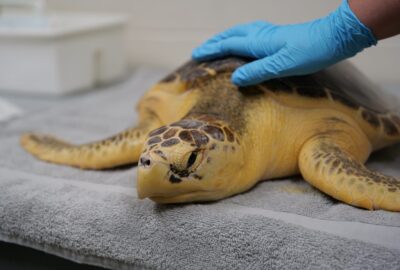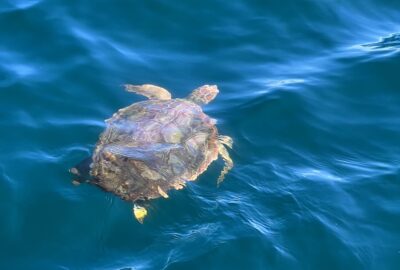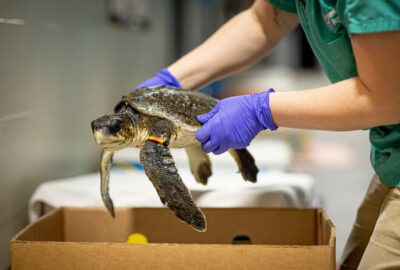A New Study Details Initial Results of Pioneering Procedure to Tag Loggerheads
By New England Aquarium on Thursday, December 14, 2023

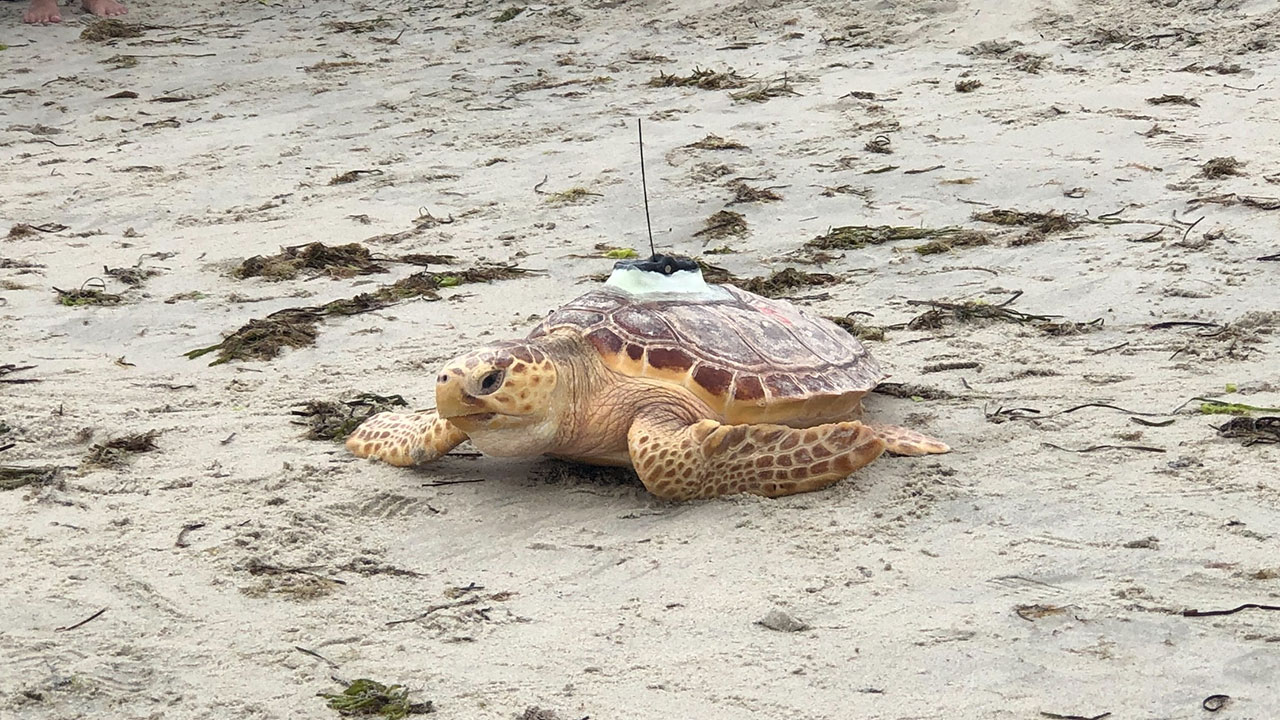
What if a rehabilitated turtle could be studied for a decade after it was returned to the wild? How could the findings about its habits or whereabouts shape conservation efforts and help save endangered and threatened sea turtles?
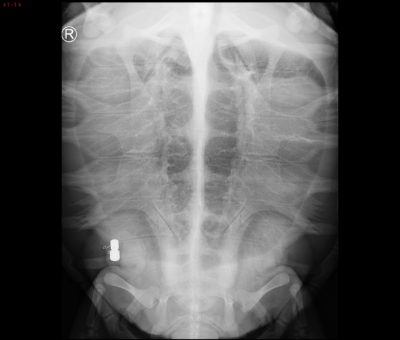
These questions and others are just a few that the New England Aquarium hopes to answer using surgically implanted acoustic transmitters. A new study, led by Drs. Charles Innis and Kara Dodge and published in the journal Animal Biotelemetry, details initial results for 15 loggerhead turtles that had transmitters implanted in 2021 and 2022—a first-of-its-kind effort developed by the Aquarium team. The transmitters produce a unique signal that can be detected by an array of underwater receivers, from which the information is periodically downloaded. Data is then shared through a collaborative network of researchers from Canada to the Caribbean.
“We have detected our tagged loggerheads over 1,300 times so far, with turtles showing up as far north as the Gulf of Maine and as far south as Florida,” shares Dr. Dodge. “We have also detected three loggerheads returning to New England in the following season, which was unexpected. Other tags typically don’t last long enough to document return migrations so we are excited to see how many turtles return to this region over time.”
Drs. Dodge and Innis received a federal permit from the U.S. Fish and Wildlife Service to conduct the pilot study due to the Aquarium’s specialized facility and expertise.
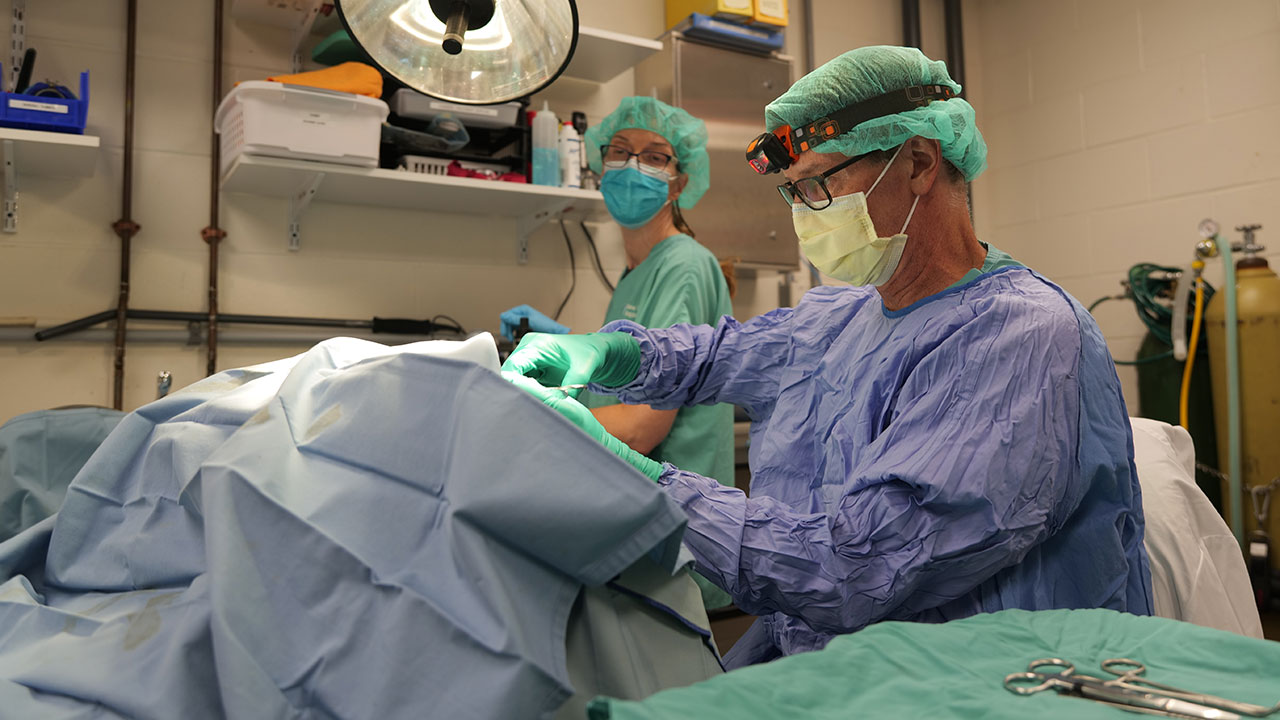
Initially, there “was concern that the shell of a turtle would inhibit the transmission of the signal and the transmitters just wouldn’t be detected,” says Dr. Innis, the lead author of the study. “Our results show that the shell doesn’t inhibit transmission, at least not so much that they can’t be detected by the receivers,” he adds.
As the procedure is refined it could be used in other aspects of turtle conservation. “One could use this method to study large, endangered freshwater turtle species, too,” Dr. Innis explains.
Some of the turtles in the study also had external satellite tags. In two instances, the satellite tags stopped working after one to two months, but the turtles were alive and well based on detections of their acoustic transmitters 356 and 471 days after their release. Without the acoustic transmitters, their outcomes would have been inconclusive.
Eighteen Aquarium employees, including Animal Care and the Anderson Cabot Center for Ocean Life, contributed to the pilot study, which was funded in part by the Arthur L. & Elaine V. Johnson Foundation. The study was approved by the U.S. Fish and Wildlife Service as part of Permit Number ES69328D.

